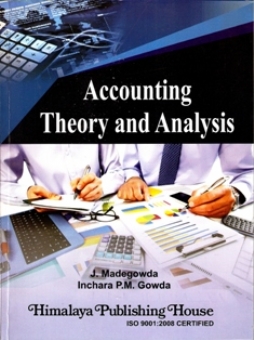Accounting has been important throughout history and in all forms of economic structures. It continues to evolve and respond to changes in informational needs of its users. Basically, there are two types of users of accounting information — external users and internal users. Though financial accounting information is primarily focused for external users, whereas cost accounting and management accounting are meant only for internal users i.e. management, yet financial accounting information is also used by internal users. This is because the management needs all types of accounting information for efficiently performing its functions of planning, controlling and decision making. The present volume is designed to meet the need of management for knowledge of accounting.
Managers and potential managers should have thorough understanding of all types of accounting i.e. financial accounting, cost accounting and management accounting. Keeping this in view, this volume is divided into four sections in logical sequence. Section I deals with basics of financial accounting, Section II explains analysis and interpretation of financial statements prepared under financial accounting, Section III deals with fundamentals of cost accounting and Section IV explains basic techniques used in management accounting.
The text of the subject matter has been organized on ’first things first’ basis for its logical presentation. It is student-friendly, simple and intelligible. The discussion that involves conceptual difficulties is immediately followed by a numerical example. In addition, the book contains a liberal sprinkling of charts and diagrams so as to make the subject easily understandable, highlight its finer points and sustain readers’ interest. Review Problems and Solutions have also been included in chapters. Apart from theoretical and numerical questions included in review questions, objective type questions have also been included to serve as self test by students.
Contents –
SECTION I : BASIC FINANCIAL ACCOUNTING
1. Introduction to Accounting
2. Accounting Principles
3. Accounting Process
4. Subsidiary Books
5. Rectification of Errors
6. Bank Reconciliation Statement
7. Final Accounts (Financial Statements)
8. Depreciation, Provisions and Reserves
9. Inventory Valuation
SECTION II : ANALYSING ACCOUNTING INFORMATION
10. Methods of Financial Analysis
11. Financial Ratio Analysis
12. Funds Flow Statement
13. Cash Flow Statement
SECTION III : COST ACCOUNTING
14. Cost Accounting—Nature and Scope
15. Basic Cost Concepts
16. Cost Sheet and Price Quotations
17. Process Costing
18. Reconciliation of Cost and Financial Accounts
SECTION IV : MANAGEMENT ACCOUNTING
19. Management Accounting — Introduction
20. Budgeting and Budgetary Control
21. Standard Costing and Variance Analysis
22. Marginal Costing and Break-even Analysis
23. Strategic Decision Making
24. Responsibility Accounting and Transfer Pricing
25. Recent Development in Cost Management







